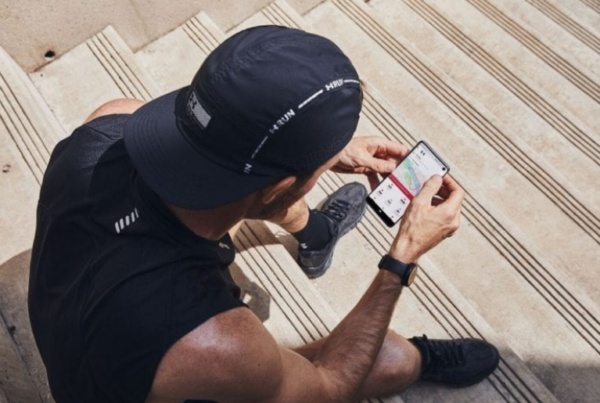Any runner looking to boost their performance should get to know the term “running economy.” Working to improve your running economy translates into greater distances covered or faster paces run with less effort.
So, what is running economy?
Simply put, running economy is the energy cost of locomotion, or a measure of how efficiently your body turns energy into running movement, says Carl Leivers, a USATF-certified running coach in Atlanta, Georgia. Think of it like the fuel economy of a car: How much fuel does it take to travel a given distance?
Running economy is especially important if you’re training to run longer distances, like marathons and ultramarathons, but any runner can benefit from having greater efficiency. As you become a more efficient runner, your body needs less energy (i.e., calories) to run at the same pace, and “the better economy you have, the faster or farther you’ll be able to go with less effort,” says Jenni Nettik, running coach and owner of Colorado-based Mercuria Running.
What’s more, research published in Medicine & Science in Sports & Exercise reveals differences in running economy accounted for a significant amount of the variation in 10K race times among runners of comparable ability and VO2 max (the maximum amount of oxygen available for use during exercise). In fact, running economy can vary by as much as 30% among runners with a similar VO2 max, and is a much better predictor of running performance among elite runners than VO2 max, according to a review in Sports Medicine.
If you’re a more economical runner, you’ll likely be able to train more without overloading your body. “That extra training can certainly help improve you as a runner, and with increased efficiency, your risk of injury should be reduced as well,” Leivers says.
So, if you want to run faster and/or farther with less effort, try these strategies to improve your running economy today.
- READ MORE > 5 WAYS HILL REPEATS CAN MAKE YOU A STRONGER RUNNER
Working to increase your running cadence, or the number of steps you take in a minute, is a relatively simple way to cut back on the energy needed to complete your run.
“Our goal with running efficiency is to have us moving forward as much as possible, and you’re actually more efficient if you take more steps,” Nettik says. “The more steps you’re taking, the less vertical you’re going to be in the air and the less side-to-side you’re doing.”
Most recreational runners have a running cadence between 150–165 steps per minute, Nettik says. To figure out your cadence, simply set a timer for 30 seconds and count the number of times your left foot hits the ground during that time. Once you have your number, double it to get your total for 60 seconds, and then double that number to get the total for both feet. Or, if you have an app like MapMyRun, it can calculate your cadence for you as well as offer coaching tips so you can keep tabs on your progress.
Aim to add 10 steps to your running cadence per week, with the ultimate goal of reaching 180. Keep in mind you might go higher or lower depending on your height.
The next time you go out for a run, take note of what your arms are doing: Are they moving forward and back, or are they crossing in front of your body? If they’re crossing in front of your body, begin working on driving your elbows back with each step. “Again, the goal is to get as much of your energy moving you forward as opposed to side to side,” Nettik says.
When done right, Pilates can be a great way to strengthen your core muscles, which encompasses all the muscles that run from the rib cage to the pelvis. And having a strong, stable midsection is key for running efficiency.
A study published in PLOS One reveals trained distance runners who incorporated classic mat Pilates into their training regimen two times per week for 12 weeks saw significantly greater improvements in running economy and 5K run times than a control group. The reason? Pilates helped runners develop greater core control and stabilization, particularly in the lower back and pelvis. This improved control and stabilization in the muscles that support the spine and pelvis meant runners didn’t need to recruit accessory muscles to assist with the task of running, leading to less energy wasted over time.
Your glutes — which include the large gluteus maximus, as well as the gluteus medius and gluteus minimus — are some of your most important running muscles. “The more of those muscle fibers you can get firing while you’re running, the more ground you’re going to cover,” Nettik says.
Unfortunately, many runners have weak glutes from so much time spent sitting that they don’t know how to activate the glutes when running, leaving other, less-efficient muscles to pick up the slack. As a result, a ton of potential power and energy gets left on the table.
If you can get your glutes fired up before you head out for your run, however, your muscles will stay active for the duration.
To get the glutes primed and ready, Nettik has her runners perform a simple routine before every run. Begin with a hip flexor stretch, holding for 3 minutes per side. Then, foam roll any problem areas before doing the following three moves:
GLUTE BRIDGE

3 sets of 30 seconds
MONSTER WALKS

10 steps to each side and 10 steps to the back
SIDE-LEG LIFTS

5–10 reps per side









